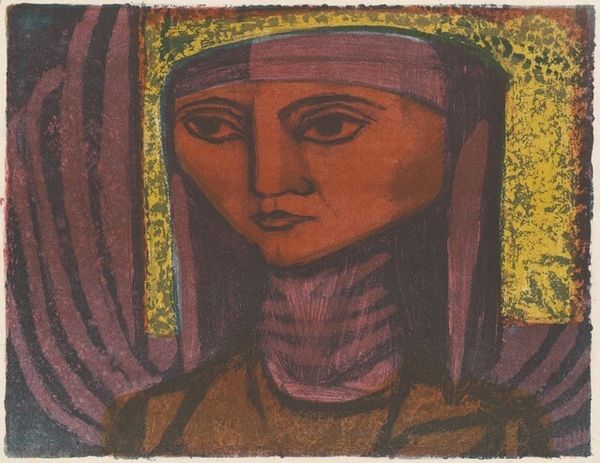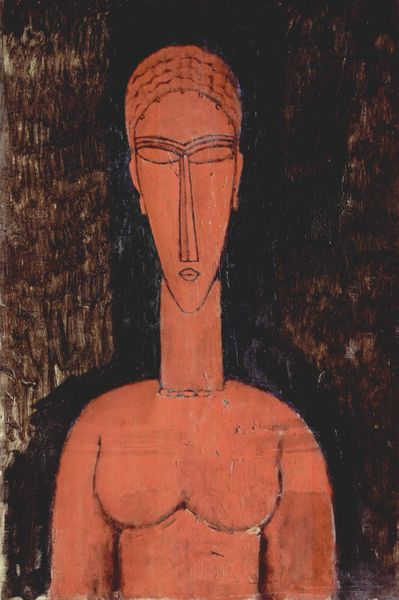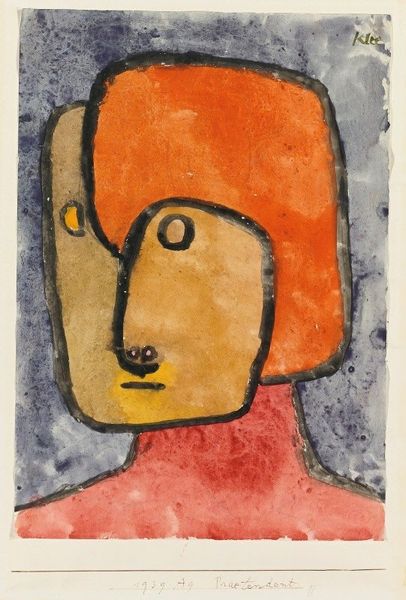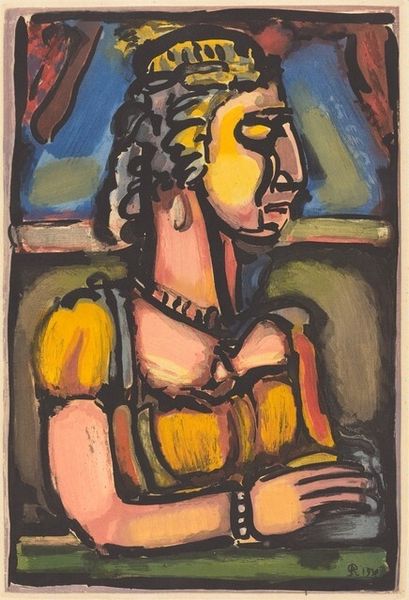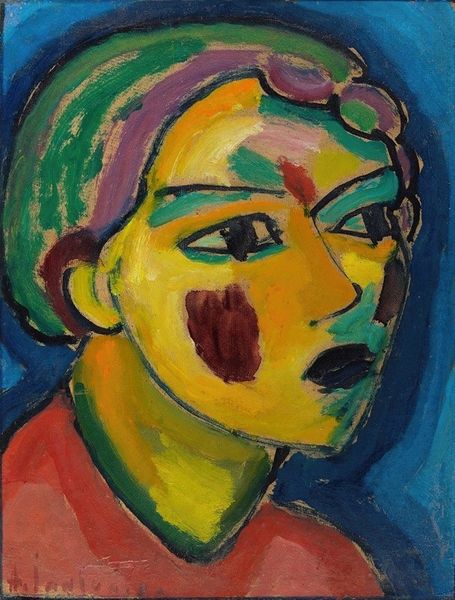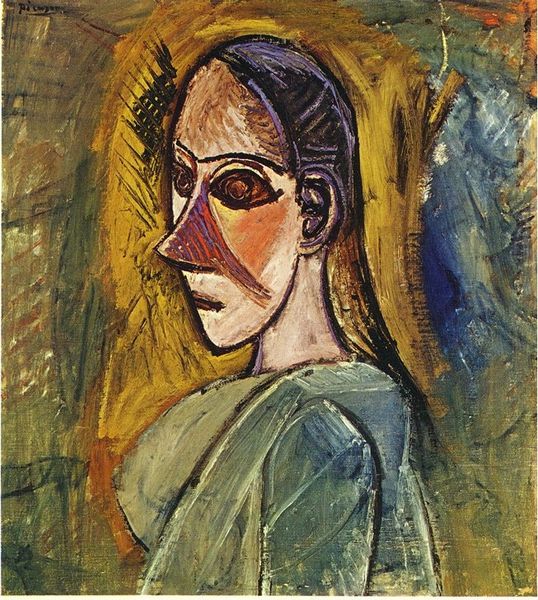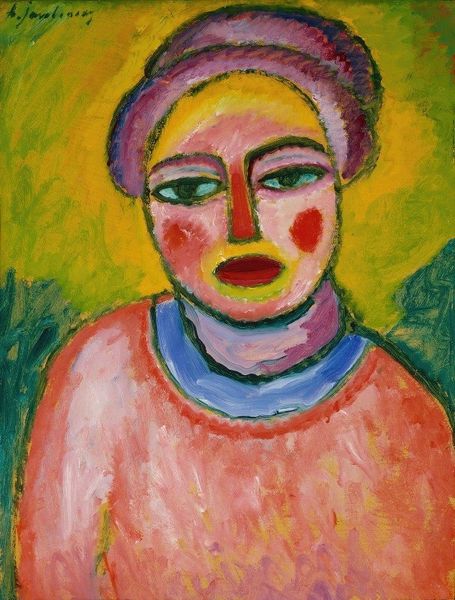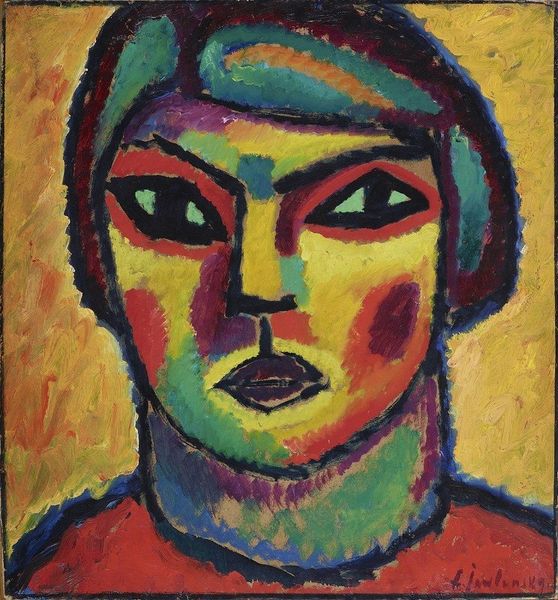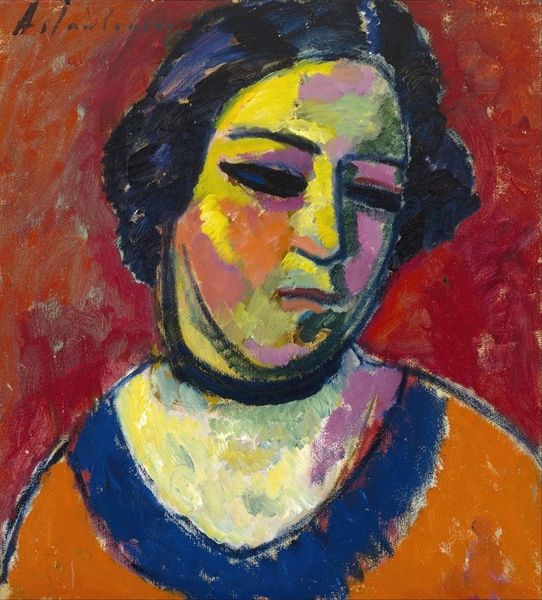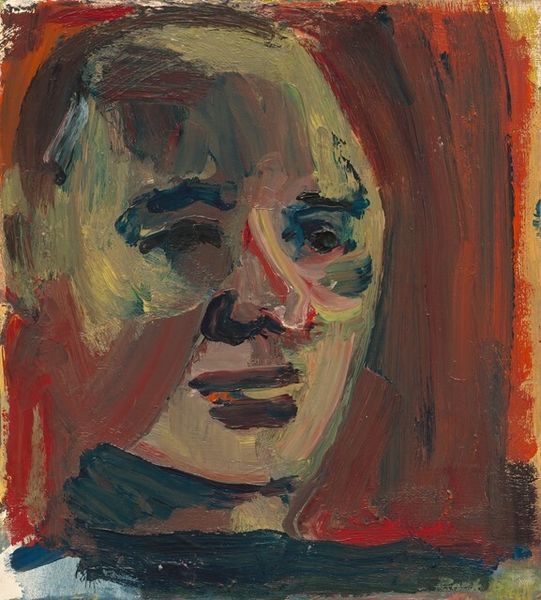
Copyright: Public Domain: Artvee
Editor: This drawing by Karl Wiener, titled ‘Spanien 1939’, ‘Grausamkeit’ created in 1939, is an unsettling piece. I notice the use of mixed media, pastel, and drawing to achieve this jarring yet simplistic look. What strikes me most is the flatness of the figure against this backdrop of muddy browns and ochres. What do you see in this piece that informs its brutal honesty? Curator: What jumps out to me is how the visible marks of production – the layering of pastel, the almost frantic cross-hatching – convey a sense of immediacy. Wiener isn't trying to create a polished illusion. Instead, the *process* of making becomes part of the message. The material itself is made to embody the cruelty suggested in the title. How does this tactile, almost crude, execution challenge traditional notions of "fine art" in your opinion? Editor: I see your point. The rough application certainly does dismiss any pretense of idealized beauty or masterful skill. This reminds me how craft and folk art often bypass those conventions to communicate directly. Curator: Exactly! Think about the social context. 1939. The title explicitly references Spain. This isn't just an abstract expression of pain, but a direct response to specific historical trauma. The materiality amplifies the effect: inexpensive drawing supplies, not grand oil paints, become the medium for bearing witness. Could we consider this artistic choice a political statement of its own? Editor: So the very act of choosing these accessible materials challenges the elitism often associated with "high art", suggesting art can – and maybe *should* – be a tool for the masses, a way to process collective suffering? Curator: Precisely. Wiener utilizes accessible methods of production to speak about global issues. It underscores that this moment belongs to everyone, thus should also be accessible to anyone who wants to portray it. It makes you consider the materials and the act of their deployment as much as the image itself. Editor: I had only noticed it from its face but your analysis expanded it greatly. I'm grateful for that insight into the relationship of process and intent.
Comments
No comments
Be the first to comment and join the conversation on the ultimate creative platform.
